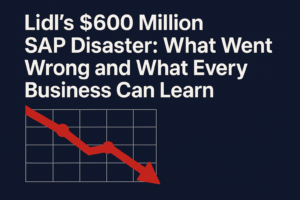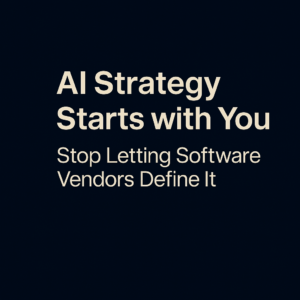At this point, your team has likely dialed in on a strategy for the new year, and it’s nearly go time. To execute on the bigger goals and objectives we set out to achieve in the new year, we need to walk in guns blazing. These bigger goals and objectives often come with a shift in operations, mindset, or general execution strategies. It’s important to identify that that in itself is a change that employees will endure and that organizational change management strategies will apply.
Whether it’s a subtle change in operations or a complete digital transformation, here are the top OCM tips and best practices to keep in your back pocket as you step into the new year.

Table of Contents
TogglePerform a Readiness Assessment
You may be ready, but is your team ready? The position your employees are in as it relates to changing operations, ERP systems, processes, etc., is significant. Understanding your employees’ readiness as you step into change will help you determine the resistance you’re up against and identify areas in your organization that need attention. Consider creating an anonymous survey to get a pulse on where your team lies in their readiness to implement a change in their day to day operations.
Another critical factor is who the survey comes from. Often times, bringing in a 3rd party to host the survey will help employees put their walls down as they complete the survey. The added comfort that comes with knowing their management teams will not see their responses will influence employees to be more truthful and whole in their answers. This leads to the acquisition of more information that you might not have otherwise attained with an internal survey, anonymous or not.
Create a Communication Plan That Goes Beyond Email
Communication is the key to life, and it pertains to everything from relationships to rolling out a new strategic plan for your team. It’s never too early to start communicating a change that is coming down the pipeline, and how you do it will tip the scales either in or out of your favor.
The key here is to opt into various communication channels and go beyond communicating a change solely via email. Yes, you should still utilize email communications, but consider adding conference calls, in-person meetings, digital or printed newsletters, and flyers. Spread the word as if you are promoting an event. After all, it is an intangible event that you’re planning to roll out, and you want as many people to join the party as you can get.
Identify and Address Resistance
It’s important to understand that there will always be resistance in any change that a leadership team is working on pushing out to the greater organization. The real question is how much resistance and what types of resistance. These factors can often be identified, or at least partially identified, through a survey. We like to frame this concept as two layers of resistance.
- Intentional Resistance
- This is the group of employees who are open and vocal that they like how things are today. They are married to the current system or processes they utilize and nearly defend against any proposed change. To realign this group, position every angle of the change as ‘what’s in it for them?’. How will the change or objective make their job easier, lead them to career growth, increase their take-home pay, etc.?
- Unintentional Resistance
- The real opposition sits with the group of employees who do not realize that they are resisting change. If these employees are not identified and realigned, it has the power to derail implementation. The reason for unintentional resistance can be due to someone’s perception that their value to the organization may be at risk. Suppose new technologies are replacing the old processes they created. In that case, they may stay in their comfort zone and continue to utilize their siloed spreadsheets and lists to continue in their day-to-day rather than sharing that critical data within the new system.

Be Strategic in Who Delivers the Message
Employees will perceive a communication differently when the CEO releases a message vs. when they receive a message from Human Resources, IT, or a 3rd party. This can be utilized to your advantage through your communication plan. Depending on how your CEO is perceived at the company, consider the communications coming from them. Of course, not every single communication should be from the CEO, but consider the larger announcements and ‘buy-in’ communications coming from the top and leaving the logistical elements to come from HR or IT. This will help reinforce executive alignment, and it will resonate further when the organization communicates a strong, cohesive message throughout all organizational levels.
Hopefully, these tips can help you venture into the new year with new goals and objectives. If you’d like more customized feedback on organizational change management best practices for your specific organization, feel free to contact us directly. We are happy to be an informal sounding board for you as you jump into 2021 and beyond.





